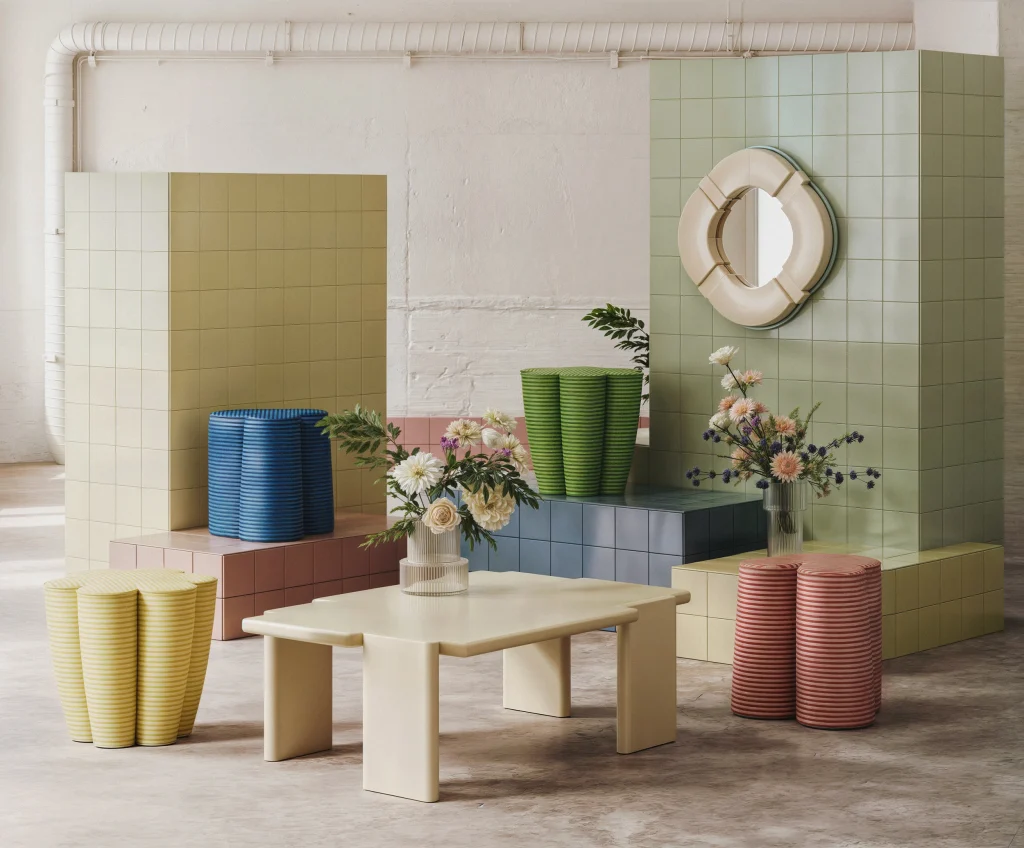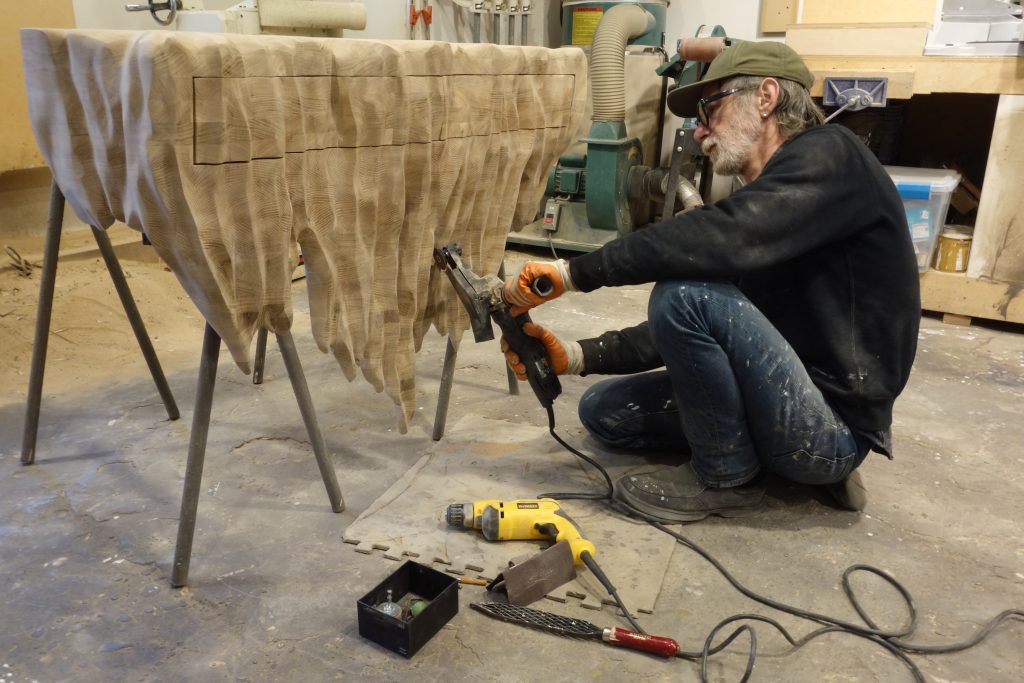
Profiles: Annalisa Rosso and Francesco Mainardi
“We’re different but at the same time synergic. Our strength lies in our two mirrored viewpoints.”
–Annalisa Rosso & Francesco Mainardi
Adorno is pleased to introduce you to Annalisa and Francesco, the curators of the forthcoming Milan Collections. Milan has earned its rank as the center of the design world, and an Eden for the creative world in general, home to Salone del Mobile, one of the most important events in contemporary design. Being located in such an epicenter has definitely had its effects on the designers and those working around them. Encompassed by the sheer amount of creative energy constantly circulating, some amount of crossover is more than to be expected. In Milan, it is not uncommon to see designers taking inspiration from and lending their visionary outlooks to creators both inside and out of the creative fields. Milan is not only a creative epicenter but the country’s industrial capital as well, with this environment, the spirit of collaboration is alive and well.
Two collaborators who exemplify this spirit of their city are Annalisa Rosso and Francesco Mainardi. Annalisa is a seasoned writer, consultant, and curator whose accomplishments include recently being named the editor in chief of ICON Design Italy. Annalisa’s experience allows her to effortlessly navigate the city’s constant cultural dialogue. A strong devotion to research and innovation combined with a deep appreciation and understanding of the essence of design make-up Francesco’s influential position in the city’s cultural sector, including a Professorship at Istituto Marangoni and a list of design and brand consultancies. The two have been combining their cultural prowess, in various projects, co-curating and have recently founded a design studio together, Mr. Lawrence. Annalisa and Francesco have taken the time to share with us how they are able to successfully collaborate and play upon each other’s differences to thrive in the cosmopolitan jungle that is Milan.
Background
Where did you grow up?
We were both born in two small towns by the sea, Francesco in southern Italy and Annalisa in the north.
What was your first encounter with design?
FRANCESCO: I’ve always been surrounded by designer items. My parents owned a historic interior design store in Salerno (south). As a child, I used to play in the shop with objects that are icons of design history today, but in those days to me, they were just a lot of fun. The first time I attended a Salone del Mobile in Milan I was 10 years old. I accompanied my father, who was a permanent presence at the time. Since then I’ve seen the Salone del Mobile at least 25 times.
ANNALISA: For me, too, the first contacts with design go back to my childhood memories. I grew up in a home that was furnished by my parents. They were not professionals but they were passionate about a kind of design that at the time was seen as very modern and avant-garde. The Arco lamp by Achille & Pier Giacomo Castiglioni for Flos and the Wink armchair by Toshiyuki Kita for Cassina are still beautifully displayed in the living room. I did my homework on a Superstudio Quaderna for Zanotta. To me, they were simply the armchair with ears and the checkered desk.
In your eyes, what was the most valuable part of your education?
F: The habit of considering the market. The outlook that my father passed on to me was fundamental to my professional growth as a designer. I always remember there’s a seller and a buyer at the end of the chain.
A: I was educated to be independent and self-reliant in my choices, so different disciplines are part of my formal education.
What is the most valuable lesson you learned outside of your schooling?
F: I learned to believe in serendipity. Never wait for luck to knock on your door, better go out and look for it!
A: I’ve always done my own thing and learned to trust my instincts.
What was the defining moment that made you choose to work with design?
F: It came naturally. I’ve always loved drawing and as a boy I helped my father create interior design projects for clients, learning to know brands and names in depth. When the time came to decide on a university course it was logical for me to choose to study Product Design at the Politecnico di Milano.
A: After working in different sectors all engaging with contemporary artistic languages – literature, theatre, art – I realized that design was the language of the present time that was right for me
If you think back to yourself 10 years ago, do you think you would have been surprised to be in the position you are today with your career?
F: Up to a point. I’ve always felt confident about what I wanted to do. Maybe I wouldn’t have imagined having my own studio. 10 years ago I saw myself in a firm.
A: Yes, it’s a surprise, 10 years ago I was convinced I wouldn’t be staying long in Milan. Today I can’t imagine being anywhere else.
What is your favorite piece of design you currently own or have come into contact with recently?
F and A: We like lamps. Francesco has worked extensively in that area and we have a lot of them. Among the favorites, the suspension lamp in our bedroom: the Leonardo lamp by Antoni Arola edited by Santa & Cole, a Spanish company that Francesco spent 7 years working for. We’re still deeply attached to it.
Images from the exhibition, Human Code, a solo show by Roberto Sironi, taking place in the underground spaces of SIAM during Milano Design Week 2019, curated by Rosso and Mainardi:






Collaboration
Where and how did you two meet each other?
F: Obviously, at work. I was head of Santa & Cole for Italy and Annalisa was the journalist following events organized in the showroom for ATcasa, the Corriere della Sera’s online design platform.
Is this the first time you two will be working this closely or have you collaborated on other projects in the past?
A: For years we’ve worked together on our respective projects in various ways until we decided to formalize this chemistry by founding our studio about a year ago. It’s called Mr. Lawrence, based in Brera, Milan.
What are you most excited for in this collaboration, are there any differences in work styles between you two that you find inspiring?
We immediately realized we complemented each other professionally: theory and design, research design and company production, order and disorder. We’re different but at the same time synergic. Our strength lies in our two mirrored viewpoints. Annalisa is interested in everything new, experimental, interdisciplinary. Francesco, by contrast, creates a dialogue with companies, following the work from production to communication and the market.
What do you think about collaboration amongst designers working as pairs? Do you have a particularly interesting pair to share with us?
Working in pairs becomes an integral part of the design practice. Systematic dialogue and the different viewpoints that crop up can be great advantages. In this respect, we greatly appreciate the work in Italy of Zaven, Zanellato/Bortotto, and collectives such as the Rio Grande.




Rosso and Mainardi’s new studio, Mr. Lawrence located in Brera, Milan.
Milan Design Scene
Give us 3 words that define the current design scene in Milan.
Energetic. Open. International.
What major current developments have been affecting designers in Milan the most?
The internationalization of the city. Milan today is become an attractive city with people from all around the world living, working or just visiting it.
What historical factors have contributed to making the Milan design scene the way it is today?
Milan is the capital of design, globally recognized as such. A new landscape is being created in full awareness of its roots. Today, Milanese designers are aware of their history but they don’t feel the burden, perhaps assisted in this by their close dialogue with the international sector.
There is a saying that Milan is the most beautiful city in Italy, but from the inside, do you agree with this saying? And how would you say that this affects the design scene in Milan?
Milan is the only cosmopolitan city in Italy. Here you can breathe an international air, energy, and vitality that are exciting but all too stimulating. Even if Milan is small and everyone knows each other – which certainly influences the design scene – it’s very useful to have a refuge elsewhere, outside the city.
Milan is a world capital for culture, most notably, fashion, do you think the design scene gets the attention it deserves or is it often overlooked?
The worlds of design and fashion are different, though only by the size of their turnover. But in recent times fashion has been paying close attention to design. Just look at the Salone del Mobile this year: there are dozens of big fashion brands that wanted to be present with breathtaking design events. The same is happening in the automotive and other sectors that are moving closer to design. The fields are entwined.
In what ways have designers in Milan benefited from the confluence of many creative industries in the city?
It’s continuously stimulating and creates opportunities to meet and work with creatives in different sectors. Design has a great potential to be expressed on very different fronts.
Can you give us your best guess at what the Milan design scene will look like in 15 years?
It will continue to experiment freely, becoming increasingly receptive to a multidisciplinary approach.
Rosso and Mainardi’s inspiring collaboration has amounted in numerous shows including Musica da Viaggio by Vito Nesta (2019), Panorama by Valentina Cameranesi (2018), and Operae in Piemonte Handmade 2016
Stay connected to see Adorno’s new Milan Collection curated by Rosso and Mainardi.
More information on the curators and their projects can be found by visiting:
https://thebrandist.it/
https://www.annalisarosso.com/











